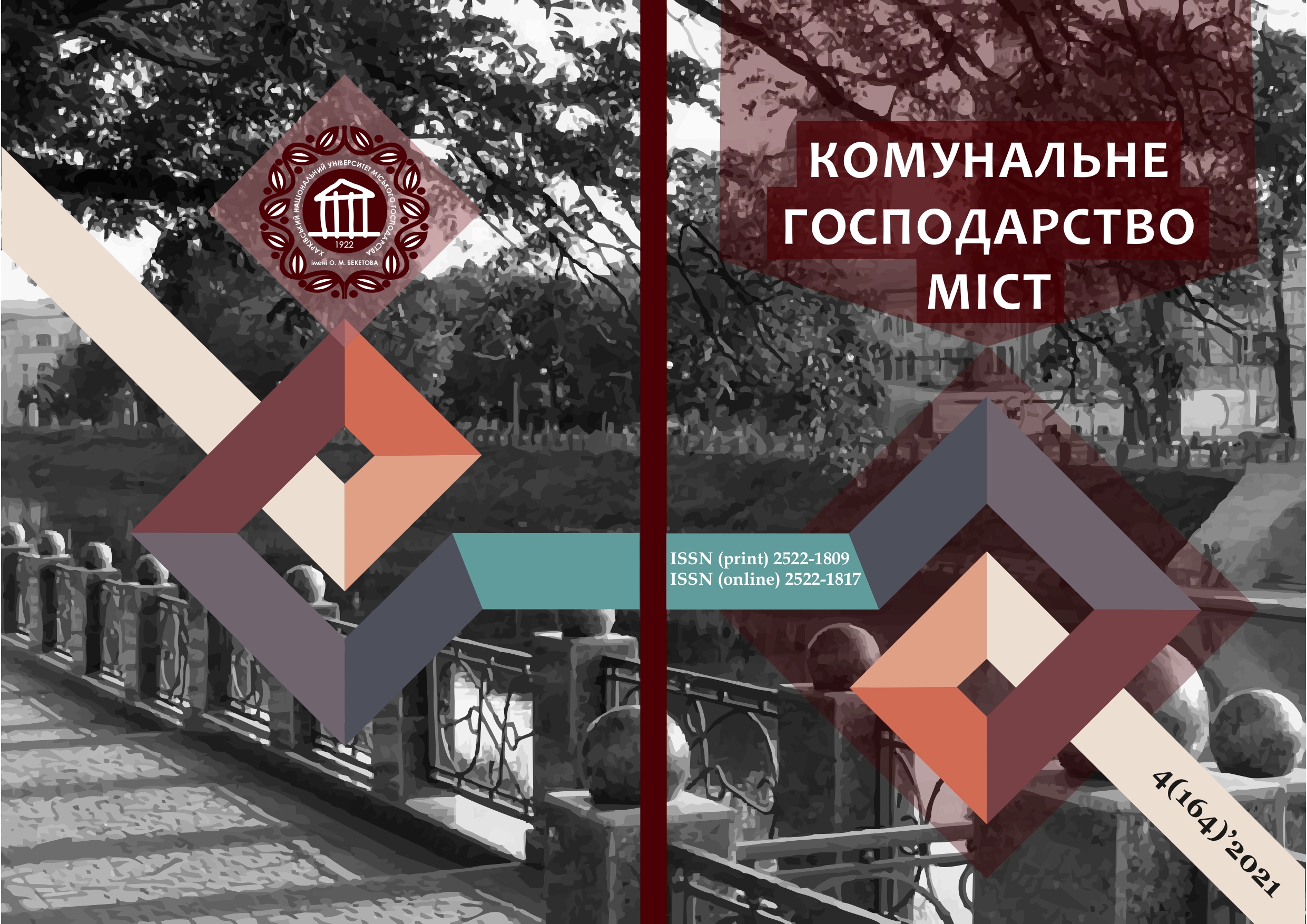PLANNING OF SPATIAL DEVELOPMENT OF THE CITY
Array
Keywords:
compact city, extensive development, construction, infrastructure, density, planning structure.Abstract
The work is devoted to the consideration of the concepts of the spatial development of the cities of Ukraine taking into account today's specifics of the formation of institutes of their management. The issues discussed in this article are relevant to almost any city in modern Ukraine at the stage of transition of the country from industrial to post-industrial type. Among the most pressing issues are the rational use of territorial resources and environmental security within urban systems. There is also a trend of uneven economic development in urban areas. The solution to this problem is the balanced development of urban space with a diversified economy and infrastructure, as well as high quality of life. The formation of multifunctional urban areas will ensure sustainable spatial development of the city and significantly affect the quality of life. Identifying areas within the city that are inefficiently used and have additional development potential will provide an important resource, which, unlike remote areas, is already provided with transport and engineering infrastructure. Efficient use of territorial resources will allow the formation of a rational compact planning structure of the city. The housing of high quality should be provided with the necessary social and transport infrastructure, be diverse, medium, and multi-story.
Comfortable stay of citizens in public spaces involves the integration of public spaces into the cultural life of the city based on the expansion of existing and introduction of new functional content, including the implementation of commercial initiatives and their use in organizing important socio-cultural projects. A comfortable stay in the city largely depends on the architectural appearance of its historic and modern buildings. Existing buildings create the front line of streets, form the environment of public spaces, define the line of the city silhouette.
Filling the existing recreational areas included in the system of public spaces with new meanings to citizens.
References
2. Korepanov, O.S. (2017) Analyzing the Urbanization Tendencies in the World and in Ukraine as a Push for Development of the National Concept of “Smart” cities. Business Inform 12, 177–182 [in Ukrainian]
3. World Urbanization Prospects. The 2018 Revision. https://www.un.org/development/desa/publications/2018-revision-of-worldurbanization-prospects.html (2018) Accessed 08 July 2021
4. Komninos, N. (2011) Intelligent cities: Variable geometries of spatial intelligence. Intelligent Buildings International 3 (3), 172–188. DOI: http://dx.doi.org/10.1080/17508975.2011.579339
5. Korepanov, O.S. (2018) On Establishing of the Concept of “Smart” Sustainable City. Business Inform 3, 114–120 [in Ukrainian]
6. Weldon, D. Has the global economy slowed down? http://www.bbc.com/news/explainers-31661078 (2015) Accessed 08 July 2021
7. Bezlyubchenko, O. & Apatenko, T. (2020) Harmonization of Public Spaces of Residential Districts. Municipal economy of cities, Series: Engineering science and architecture 3 (156), 140–148 [in Ukrainian] DOI: https://doi.org/10.33042/2522-1809-2020-3-156-140-148
8. United Nations Centre for Human Settlements. (2001) The state of the world's cities report 2001. Nairobi, Kenya: United Nations Centre for Human Settlements (Habitat)
9. Harrison, C., Eckman, B., Hamilton, R., Hartswick, P. (2010) Foundations for Smart Cities. IBM Journal of Research and Development 54 (4), 1–16. DOI: http://dx.doi.org/10.1147/JRD.2010.2048257
10. Development of strategies for development of cities in Ukraine: instruction and survey of practices. Federation of Canadian municipalities. http://pleddg.org.ua/ua/ Accessed 09 July 2021
11. Meshcheryakov, V.V. (2012) Urban planning as a component of city development management. Derzhavne upravlinnya: udoskonalennya ta rozvytok 9. URL: http://www.dy.nayka.com.ua/?op=1&z=469
Downloads
Published
How to Cite
Issue
Section
License
The authors who publish in this collection agree with the following terms:
• The authors reserve the right to authorship of their work and give the magazine the right to first publish this work under the terms of license CC BY-NC-ND 4.0 (with the Designation of Authorship - Non-Commercial - Without Derivatives 4.0 International), which allows others to freely distribute the published work with a mandatory reference to the authors of the original work and the first publication of the work in this magazine.
• Authors have the right to make independent extra-exclusive work agreements in the form in which they were published by this magazine (for example, posting work in an electronic repository of an institution or publishing as part of a monograph), provided that the link to the first publication of the work in this journal is maintained. .
• Journal policy allows and encourages the publication of manuscripts on the Internet (for example, in institutions' repositories or on personal websites), both before the publication of this manuscript and during its editorial work, as it contributes to the emergence of productive scientific discussion and positively affects the efficiency and dynamics of the citation of the published work (see The Effect of Open Access).

